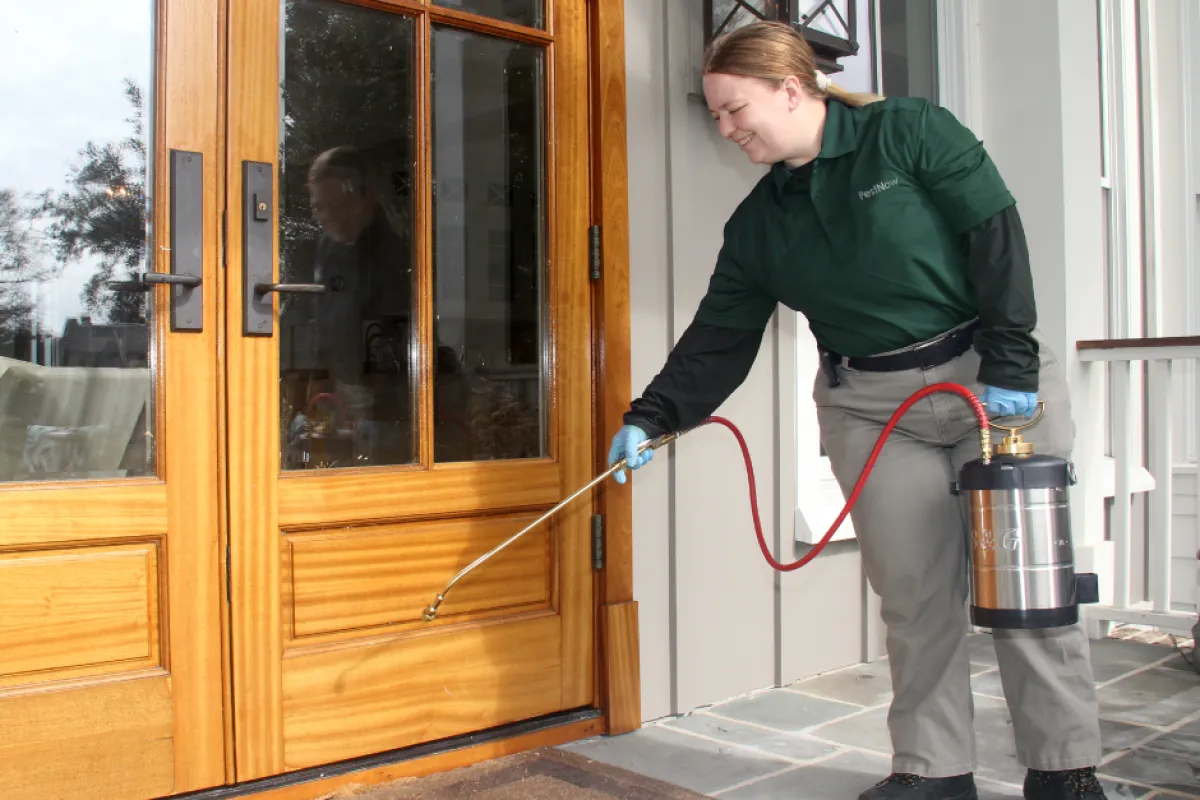Trusted A1 Bed Bug Exterminator Charlotte - Get Rid of Bed Bugs Rapid
Trusted A1 Bed Bug Exterminator Charlotte - Get Rid of Bed Bugs Rapid
Blog Article
Bed Insect Therapy Break Down: Contrasting Chemical Vs. Non-Chemical Solutions
In the world of insect control, specifically when taking care of the persistent problem of bed insects, the option in between chemical and non-chemical treatment options can be a pivotal one. Both techniques use distinct advantages and downsides, influencing elements such as efficiency, safety factors to consider, and overall price. By taking a look at the nuanced information of each technique, a clearer understanding of which course to go after in addressing a bed bug invasion can be attained.
Efficiency of Chemical Treatments
Chemical treatments for bed insect problems have been commonly acknowledged for their fast and potent effectiveness in getting rid of these pests. When thinking about the performance of chemical therapies, it is critical to understand that they can offer a fast and detailed service to a bed insect issue. Specialist pest control specialists commonly count on pesticides to target bed pests at numerous stages of their life process, including nymphs, adults, and eggs. These chemicals typically function by interfering with the bed bugs' nerve system, bring about paralysis and ultimate death.
Moreover, chemical therapies have the benefit of supplying residual impacts, meaning that they can continue to remove bed pests even after the preliminary application. This recurring activity is especially beneficial in combating any possible re-infestations. Additionally, the rapid action of chemical therapies can bring alleviation to people facing serious bed bug invasions, permitting them to reclaim control of their home swiftly.
Safety And Security Worries With Chemical Solutions
One critical aspect that calls for mindful consideration when utilizing chemical solutions for bed bug treatment is making sure the safety of passengers and the setting. While chemical treatments can be efficient in eliminating bed insects, they may pose threats if not handled correctly. Among the main security worry about chemical options is the prospective injury they can trigger to human wellness. Exposure to particular chemicals made use of in bed insect treatments can result in respiratory system concerns, skin irritability, or other negative responses, particularly in individuals with pre-existing conditions or level of sensitivities. Furthermore, improper application or dose of chemical pesticides can result in toxic residues remaining in the treated location, presenting long-term health and wellness dangers to residents.
Moreover, the ecological impact of chemical remedies is one more substantial factor to consider. Some chemicals utilized in bed insect therapies may be unsafe to beneficial pests, wildlife, and ecological communities if they seep into the dirt or water supply. It is important to make use of chemical therapies sensibly, adhering to safety and security standards, and considering less toxic options to alleviate these threats and guarantee the efficient and safe monitoring of bed bug problems.
Benefits of Non-Chemical Approaches
Taking into consideration the potential safety and security issues and ecological effect related to chemical remedies for bed pest treatment, discovering non-chemical techniques offers an appealing alternative with several unique benefits. Non-chemical techniques offer a more secure choice for households, specifically those with people, kids, or pet dogs conscious extreme chemicals. These approaches get rid of the threats of direct exposure to toxic compounds, reducing the capacity for damaging health impacts. Furthermore, non-chemical treatments are eco friendly, as they do not add to air or water pollution, making them a sustainable choice for bug control.
In addition, non-chemical services can be efficient in targeting bed bugs, consisting of hard-to-reach areas where chemical treatments might not permeate - A1 exterminators charlotte nc. Approaches such as warm treatment, vacuuming, steam cleaning, and cushion encasements provide thorough obliteration without the use of harmful chemicals.
Limitations of Non-Chemical Treatments

Additionally, non-chemical therapies typically call for multiple applications to achieve successful eradication. This can be lengthy and might not always guarantee total removal of all bed pests western pest control and their eggs, especially in hard-to-reach or surprise places.
Moreover, the success of non-chemical therapies greatly depends on correct execution and thoroughness, which can be testing for people without professional knowledge. Insufficient application of non-chemical approaches may result in incomplete removal, resulting in consistent problems and the requirement for extra treatments.
For that reason, while non-chemical treatments have their advantages, it is vital to recognize these restrictions and consider them when figuring out one of the most effective technique for handling bed insect invasions.
Expense Comparison: Chemical Vs. Non-Chemical Options
Provided the constraints connected with non-chemical therapies, a crucial facet to examine in the context of bed insect monitoring is the price contrast in between chemical and non-chemical choices. Chemical treatments typically include the application of pesticides by experts, which can range from $250 to $900 per space, depending on the severity of the infestation and the size of the location to be treated. On the other hand, non-chemical therapies like heat therapy or steam can be more image source costly, with expenses varying from $1,000 to $6,000 for an entire home. While the preliminary expense of chemical treatments may appear reduced, several a knockout post treatments might be required to totally remove the invasion, potentially boosting the total cost. On the various other hand, non-chemical choices might offer a more sustainable and eco-friendly option, although they can be cost-prohibitive for some individuals. Inevitably, when thinking about the cost of bed pest treatment options, it is important to consider the in advance expenditures against the performance and lasting sustainability of the selected method.
Final Thought

Thinking about the prospective security issues and environmental effect associated with chemical solutions for bed bug therapy, discovering non-chemical strategies offers an appealing alternative with numerous unique benefits.Given the constraints connected with non-chemical therapies, a crucial element to evaluate in the context of bed bug monitoring is the expense contrast in between chemical and non-chemical options. In comparison, non-chemical treatments like heat treatment or vapor can be much more pricey, with expenses varying from $1,000 to $6,000 for an entire home. While the first cost of chemical treatments might seem reduced, multiple therapies may be called for to fully eradicate the problem, possibly boosting the total cost.In final thought, when contrasting chemical and non-chemical bed insect treatment alternatives, it is vital to think about efficiency, security, advantages, limitations, and price.
Report this page